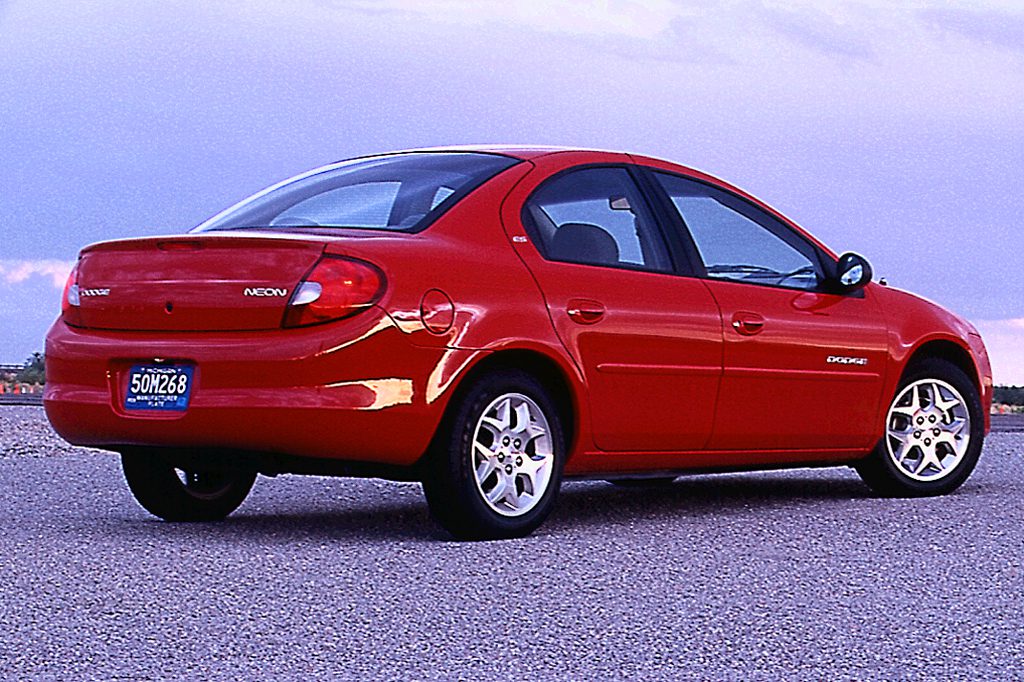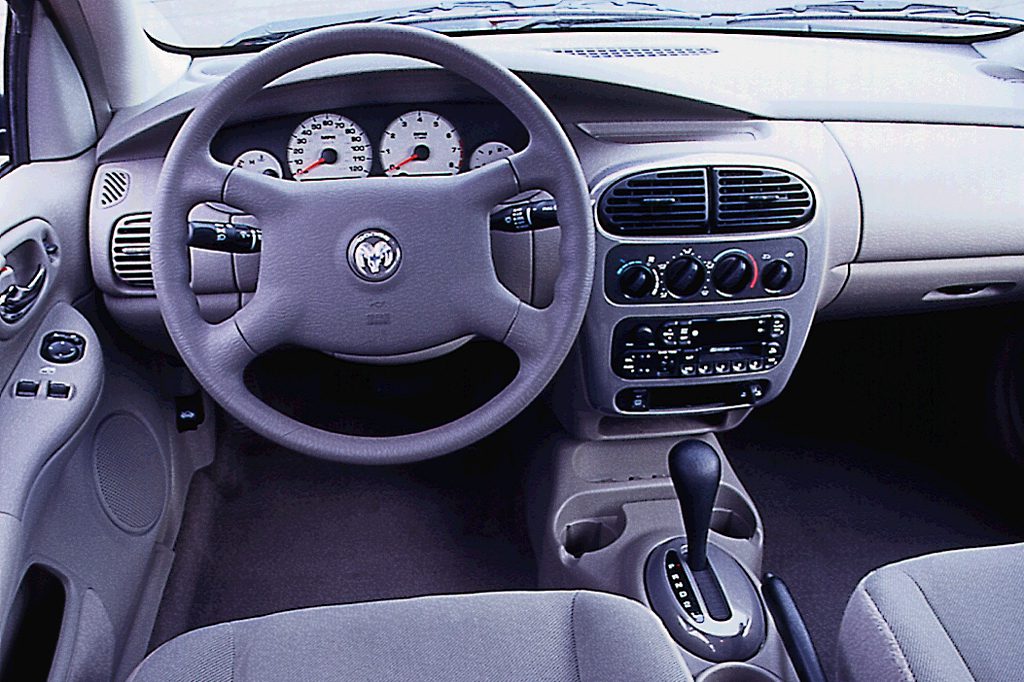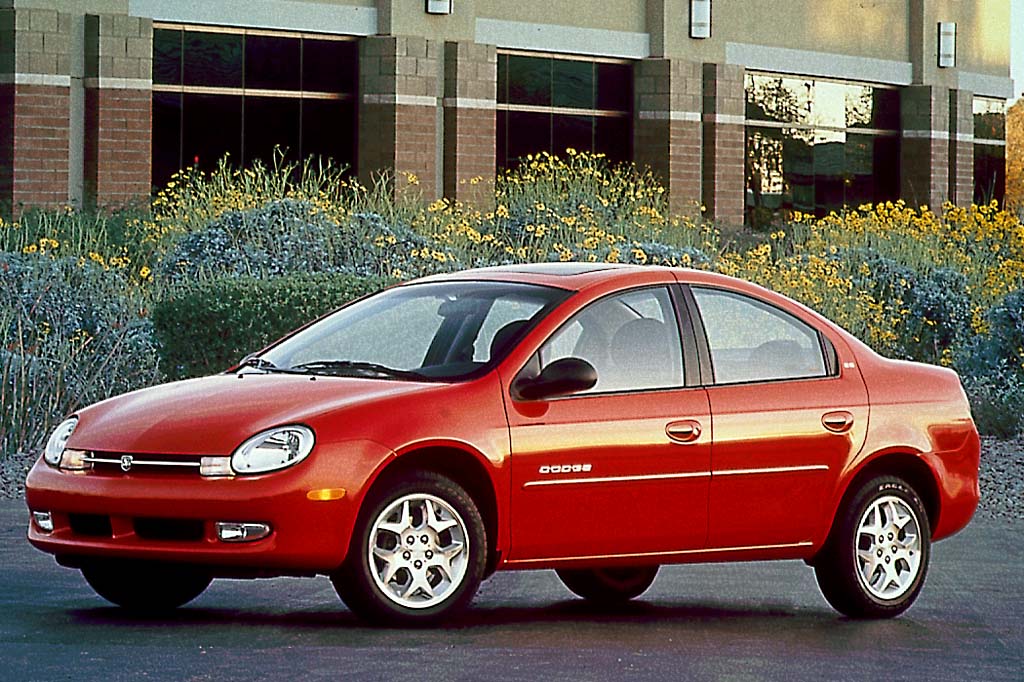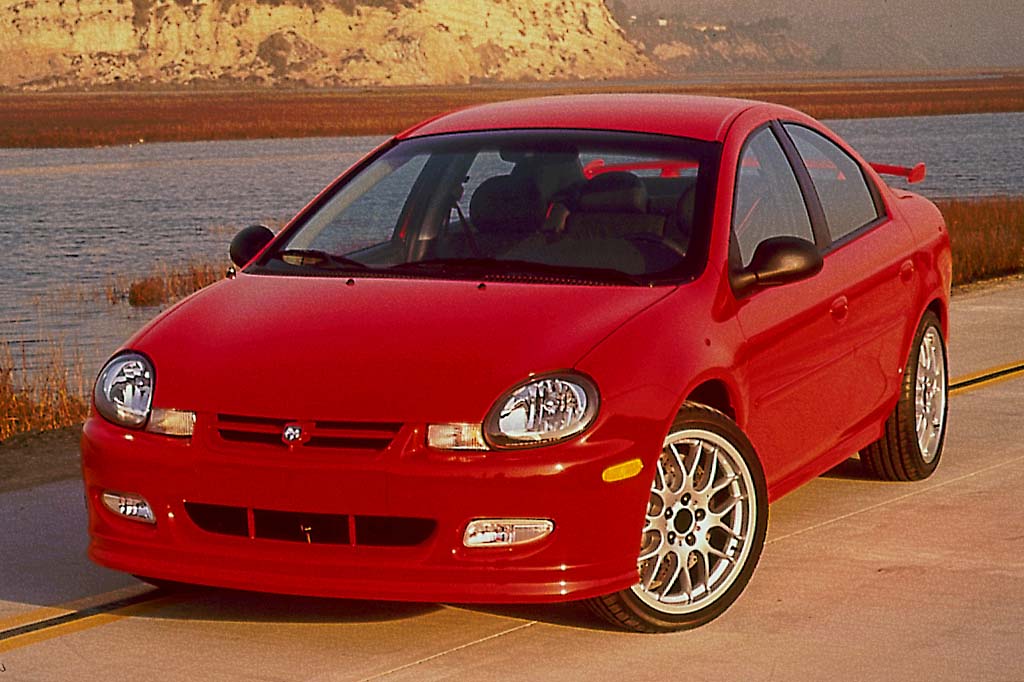| Compact car; Built in USA |
|
|
| Good condition price range: $1,900 – $7,500* |

2000 Dodge Neon

1999 Dodge Neon

1999 Dodge Neon interior

2001 Dodge Neon

2001 Dodge Neon R/T
| Pros: |
|
| Cons: |
|
Tepid acceleration aside, the regular Neon is a capable, fairly refined, and well-equipped subcompact at an appealing price–perhaps even more tempting when secondhand than as a new car. SRT-4 models are inexpensive hot rods that are fun to drive and economical on gas. Sales have been sluggish in new-car showrooms, which helps to keep prices down. Watch out for engine overheating or blown head gaskets. Both are expensive to repair.
Overview
Redesigned as an early 2000 model, Dodge’s subcompact now came only as a 4-door sedan. As before, a nearly identical Plymouth version was created. Appearance did not change substantially, compared with the 1995-99 first-generation models. Neons came in two trim levels: base Highline and better-equipped ES, though the latter was actually an option package. Sole engine was a 132-horsepower overhead-cam 4-cylinder, with a 5-speed manual transmission or optional 3-speed automatic. Antilock 4-wheel disc brakes were optional, packaged with traction control. Side-impact airbags were not available. In fall 1999, a cassette player and a leather shift boot for the manual gearshift lever became standard, and a CD changer joined the options list. The power-window option is for front windows only.
Yearly Updates
| 2001 Neon Front side-impact airbags became available this year, included with newly optional leather upholstery. Base models were named ES. Two performance-oriented option groups joined the lineup: R/T and ACR (American Club Racer), the latter intended for organized competition. Both of those used a 150-horsepower version of the Neon engine and came only with manual shift. Antilock brakes were standard on the R/T and ACR. Because the Plymouth brand disappeared during the 2001 model year, subsequent Neons would be marketed only by Dodge dealers. |
| 2002 Neon A new automatic transmission, available chrome wheels, and an optional compass/outside-temperature display were the 2002 highlights for Neon. |
| 2003 Neon A new high-performance model called SRT-4 got unique body trim, including a functional hood scoop and basket-handle rear spoiler, plus specially tuned sport suspension and brakes, sport seats, and exclusive interior details, such as a 160-mph speedometer.It was powered by a turbocharged 2.4-liter engine that made 215 horsepower. New front and rear styling and a new steering-wheel design highlight the changes on SE, SXT, and R/T. |
| 2004 Neon For 2004 SRT-4 got a power boost, but Dodge’s smallest sedan otherwise stood. The 2.4-liter turbocharged engine in the SRT four gained 15 horsepower to 230 and that model also got a standard limited-slip differential. |
| 2005 Neon For Neon’s last year, the SRT-4 gets specially tuned sport suspension and brakes, sport seats, a 160-mph speedometer, and racing-inspired polished-metal pedals. It also includes special body trim, including a hood scoop and rear spoiler. |
